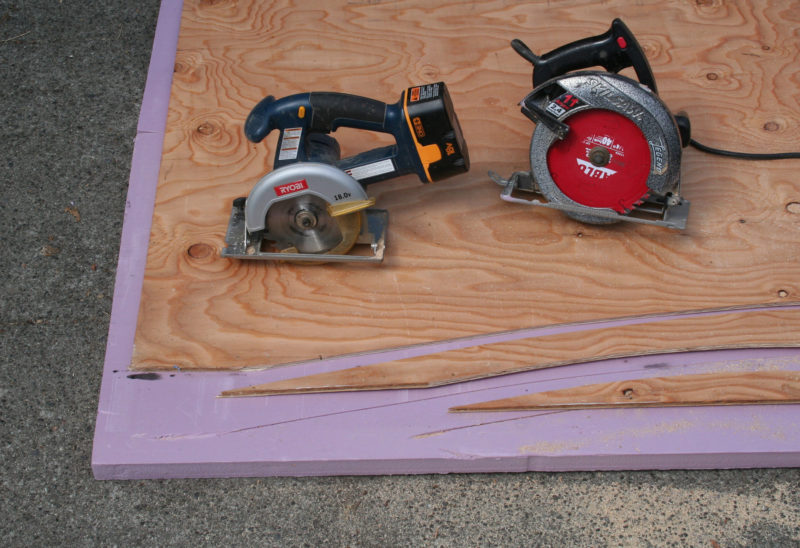 SBM photos
SBM photosSawing a sheet of plywood is quick and safe when it’s resting on a sheet of rigid foam insulation.
Most of us who build boats at home do not have the facilities needed to handle 4′ x 8′ sheets of marine plywood with ease. I’ve always found it challenging to put a sheet of ¾″ or even ½″ marine plywood up onto the tablesaw to cut it to size. Thinner plywood may weigh less, but it doesn’t have the stiffness to lie flat on the tablesaw top. Roller stands, while useful in supporting the plywood, do not make it much easier to avoid binding the saw and the inevitable kickback. Besides, many of the cuts I want to make are curves—not an option with a tablesaw.
Building any boat that involves sheets of plywood is made much easier when using a technique taught to me by boatbuilding instructor Pat Mahon, now the executive director of the Great Lakes Boatbuilding School in Cedarville, Michigan.
Pat’s technique is simplicity itself: Use a 4′ x 8′ sheet of rigid foam, the type used to insulate buildings under construction, to support the plywood and then cut through the plywood and into the foam. The sheet I have in my shop right now is Corning Foamular 250, a 2″-thick sheet of extruded polystyrene (XPS) insulation (1½” XPS is shown in the photos) that weighs under 8 lbs and costs about $31. The XPS panels are stiffer and more resistant to compression than the other common insulation panels—expanded polystyrene (EPS) and foil-faced Polyisocyanurate (Polyiso)—so it won’t get badly crushed if you put your weight on it, especially if you have the plywood on top of it.
I’ve occasionally used sawhorses to elevate the foam sheet and the plywood, but it’s easier to flop the foam and plywood down on the floor than to get out the sawhorses and set everything up only to take it down 10 or 15 minutes later. Set the foam on the floor and put your plywood, best-side down, on top of the foam. If you don’t have room in the shop to do the cutting, you can use the foam sheet outside in the driveway. It will protect the plywood from grit and pebbles that would otherwise damage the plywood.
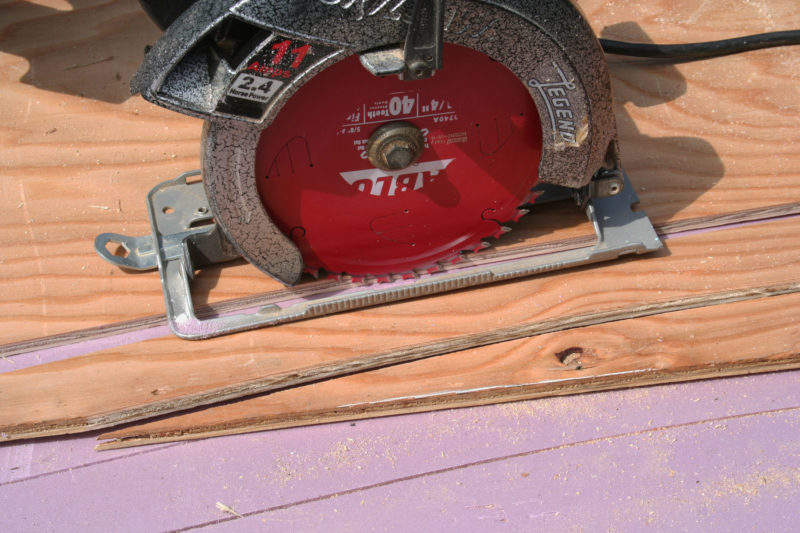
If the saw blade is set to cut slightly through the plywood, the foam will last quite a while and you’ll be ale to make curved cuts.
Set your circular saw to the thickness of the plywood and add an extra 1/8″ to ¼″ to ensure you cut all the way through it without causing excessive damage to the foam. The foam offers little resistance to the saw blade and helps reduce tear-out on the plywood face that rests against it. Make the cuts you need. That’s really about it.
A circular saw set to cut just barely through the plywood will cut a gentle curve without binding. By using a sharp thin-kerf carbide-tipped plywood blade (I use Diablo blades, and I’m sure there are other equally good manufacturers), you can cut extremely close to the line and minimize the amount of time you will need to clean up the curve with a block plane and sandpaper.

Two circular saws and the curves they cut through common 3/8″ CD plywood: The smaller blade of the cordless saw made the cut at right with a tighter radius.
A small cordless circular saw with a 5 ½″ or a 6 ½″ blade can cut an even tighter curve than a standard saw with a 7 ¼″ blade. In one of Pat’s classes we could get 10 or 15 minutes of operation from the small circular saw we used, more than enough to cut the curves needed to shape each plank for the Caledonia yawl we were building.
I store my foam sheet above the overhead retractable door of my garage/boatshop. The foam sheet is easy to lift up there, and it is out of the way until it’s needed. If you don’t have space for the full sheet, cut it in half or even in quarters.
An added advantage to using a sheet of foam for a cutting surface is that you can put the foam to use in other ways after you’ve finished using it. You can cut it up with a craft knife or circular saw and use it as flotation in the boat you’ve built or glue pieces together to make a highly efficient cooler.![]()
Pete Leenhouts, a retired naval officer, lives on the Olympic Peninsula where he enjoys building, restoring, and using his boats. His review of a clam skiff also appears in this issue.
You can share your tricks of the trade with other Small Boats Monthly readers by sending us an email.




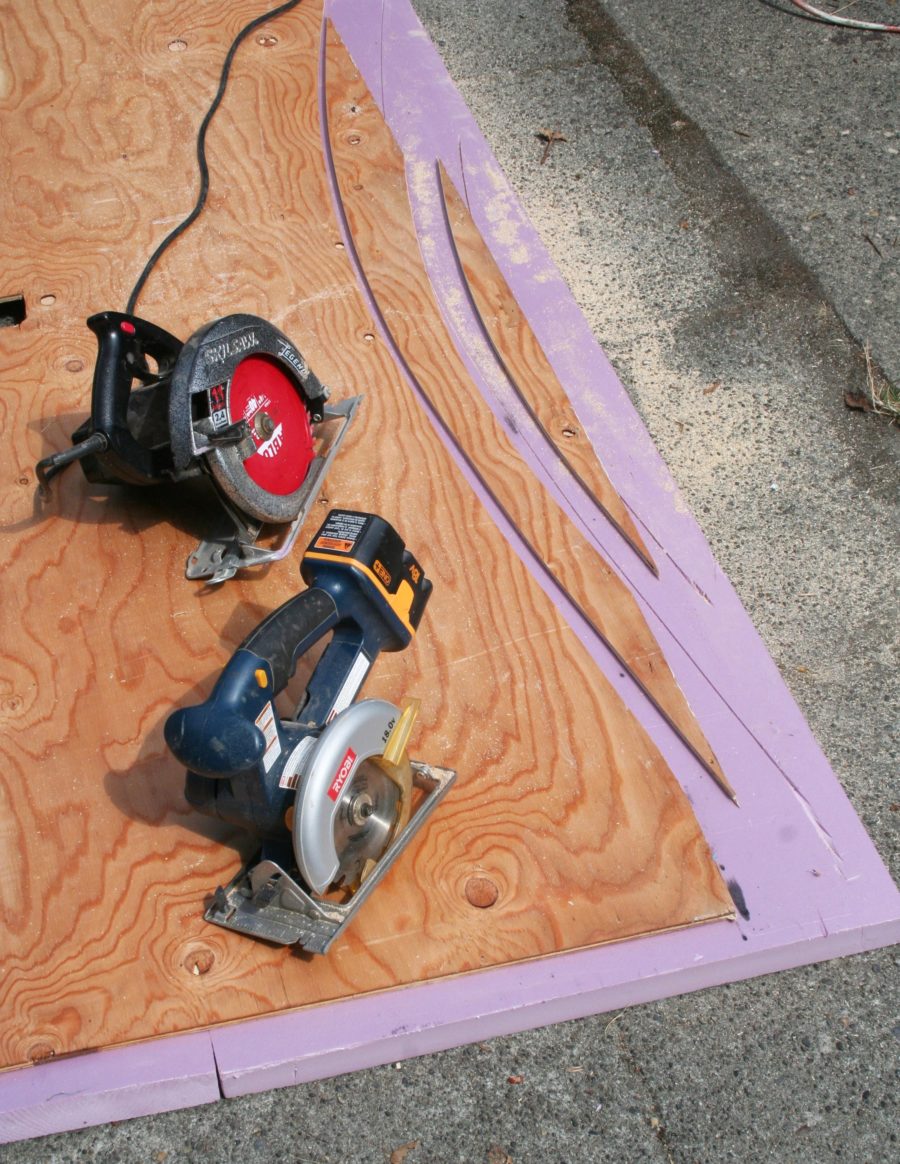









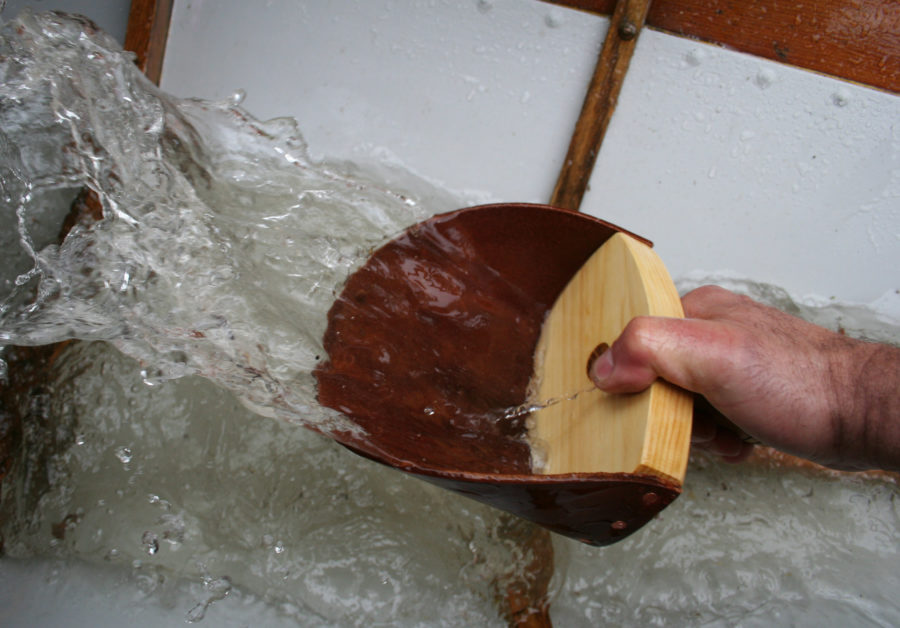





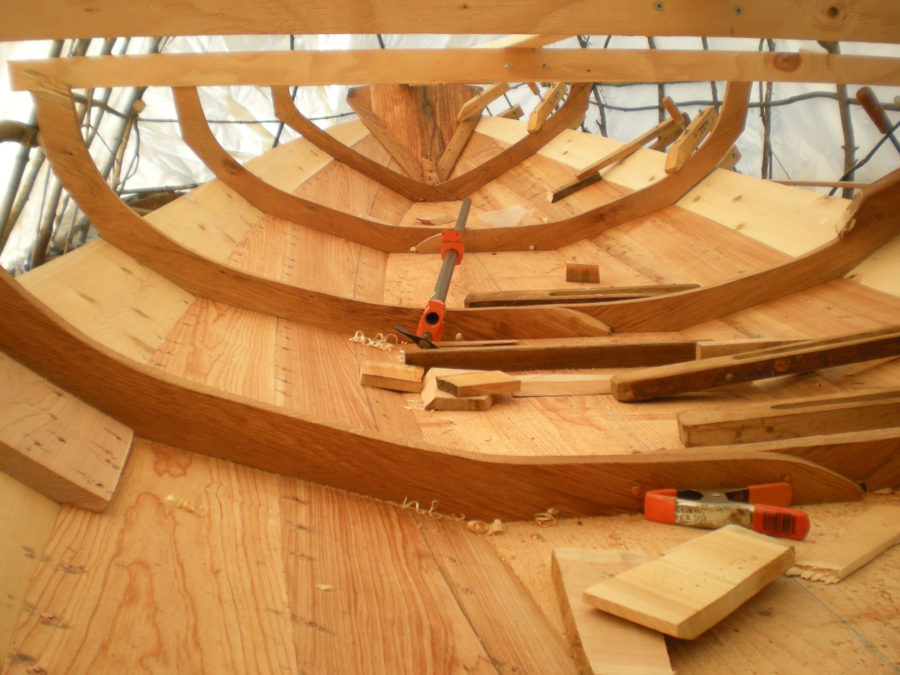

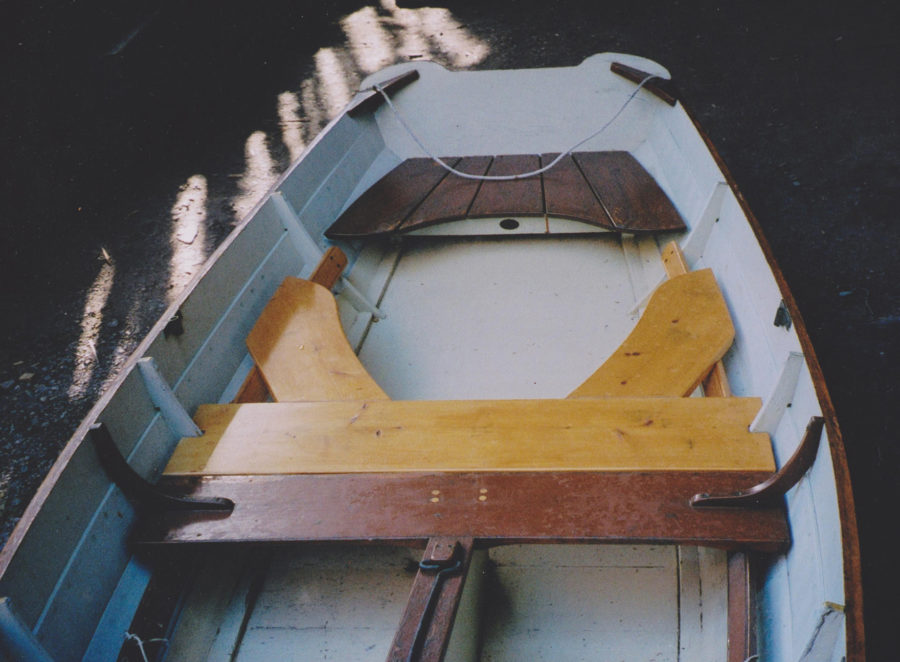

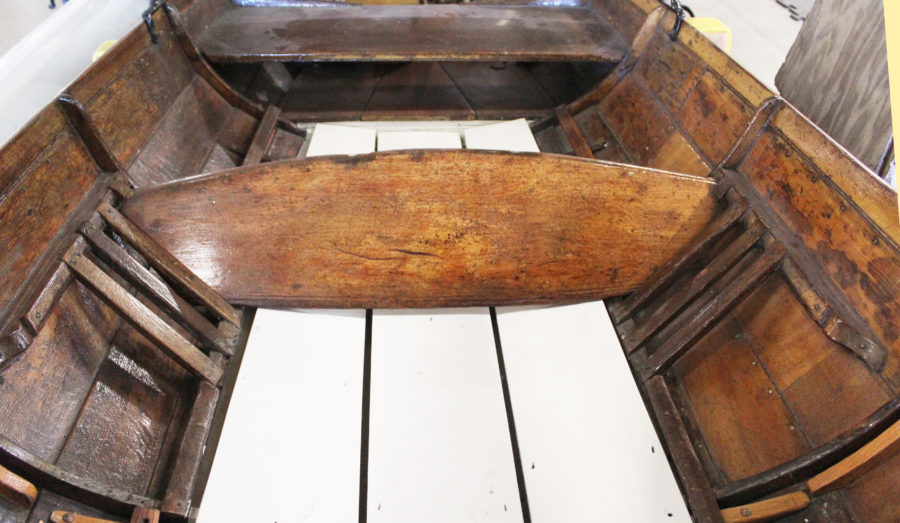
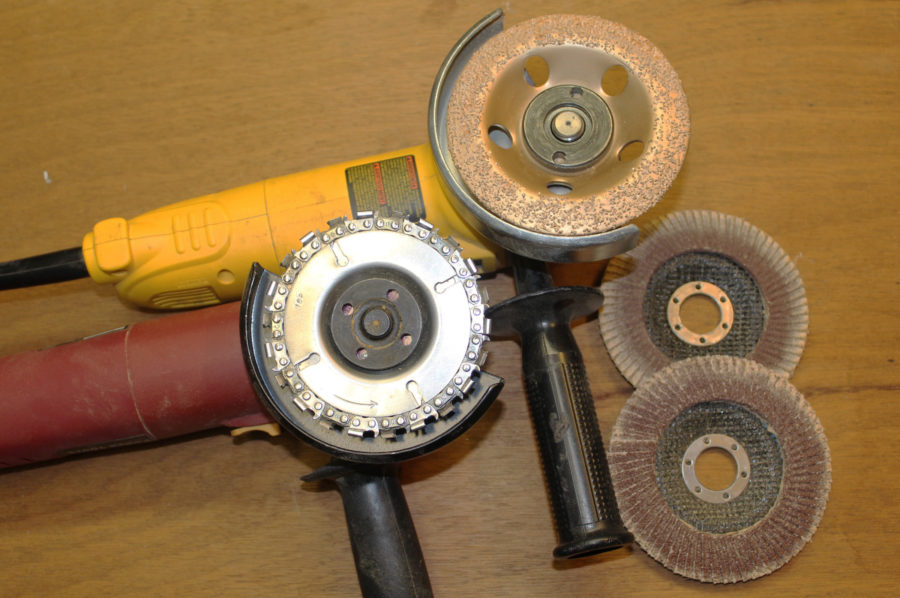
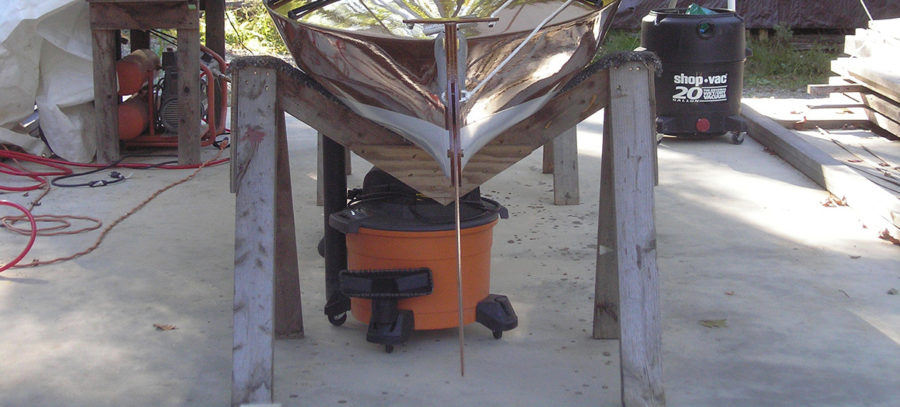
An absolutely brilliant idea. I have used foam for cutting other things, but never wood. I have to give this a try on my home projects.
Thank you!
Thank you for a fine idea. This approach to ripping large panels is just what I need. Very clever.
I thought I’d died and gone to heaven when I discovered a source of extruded polystyrene foam in Indonesia. Of course expanded PVC is a much stronger foam, but there are only a few manufactures in the world (Divinicel, Klegecel) and the price is many times the price of XPS. I found that XPS mates well with epoxy and, cut in strips, will bend readily to a curve. I have since used XPS to build rudder blades for a large sailing catamaran, a dagger board for an F 27 trimaran (reinforced with some carbon fiber) and a round bilge dinghy. By gluing strips of foam around a temporary mold, filling the groves with thickened epoxy and sheathing the insides and outsides with fiberglass set in epoxy, I “cold molded” a hull that is reminiscent of the Strongplank System (a foam and fiberglass sandwich technology invented by Dieter Comes for one-off boatbuilding). My next project is to build a wave-breaking “third hull” under a large sailing catamaran to reduce the slapping of waves under the bridge deck, using XPS foam lamination.
Now this is a tip I can use! Never thought of it myself, so I’m glad there’s a place where stuff like this can be shared!
I understand the application of this but find it wasteful. We already have way too many plastics being dumped into our ecosystems. I struggle all the time with trying to find ways to use up all my wood/building wastes.
It’s true that plastics are a significant environmental concern. I don’t know of any biodegradable foam insulation boards or recycling centers that accept XPS. The foam board can, as the article indicated, be put to other uses.
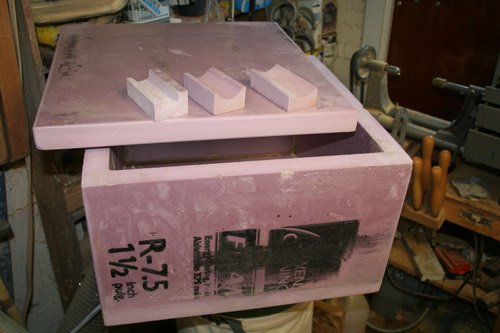
The bulk of the sheet I used is now a very effective cooler for my son’s Escargot canal cruiser. The smaller bits get used for sanding blocks. I use a bandsaw to cut the blocks to match the contours of woodwork I need to sand, whether it’s window molding (left) or spars (center and right). Don Aupperle uses a hot wire to cut foam sanding blocks with great precision.
I should mention that XPS foam is not a good choice for use as a steambox. The XPS distorts when subjected to steam. The foil-faced polyiso foam is what I’ve used for foam steamboxes and they’ve lasted for many years. (See “The Foam Steambox: In situ steaming,” WoodenBoat Nov/Dec 1992, issue 109.)
The clam skiff I built didn’t pose any problems with sawing plywood—it was a 12″ model of the 16′ clam skiff in John Gardner’s WoodenBoats to Build and Use—but using foam is a great idea for cutting plywood sheets when sheathing a roof. (I’m an importer of asphalt shingles from the US into Australia.) Cutting the plywood at the angles needed for hips or valleys is always difficult and you often cut through the timber framing underneath it. I’m going to try using foam on the next job.
This is a great idea. I used to work in a custom cabinet shop and it was quite a job to get a 3/4″ sheet of birch plywood to play nice on the table saw. I have since given up the cabinets—my back said no more installations—but I still work some wood at home. This will really make my back happy. Thanks for sharing this idea.